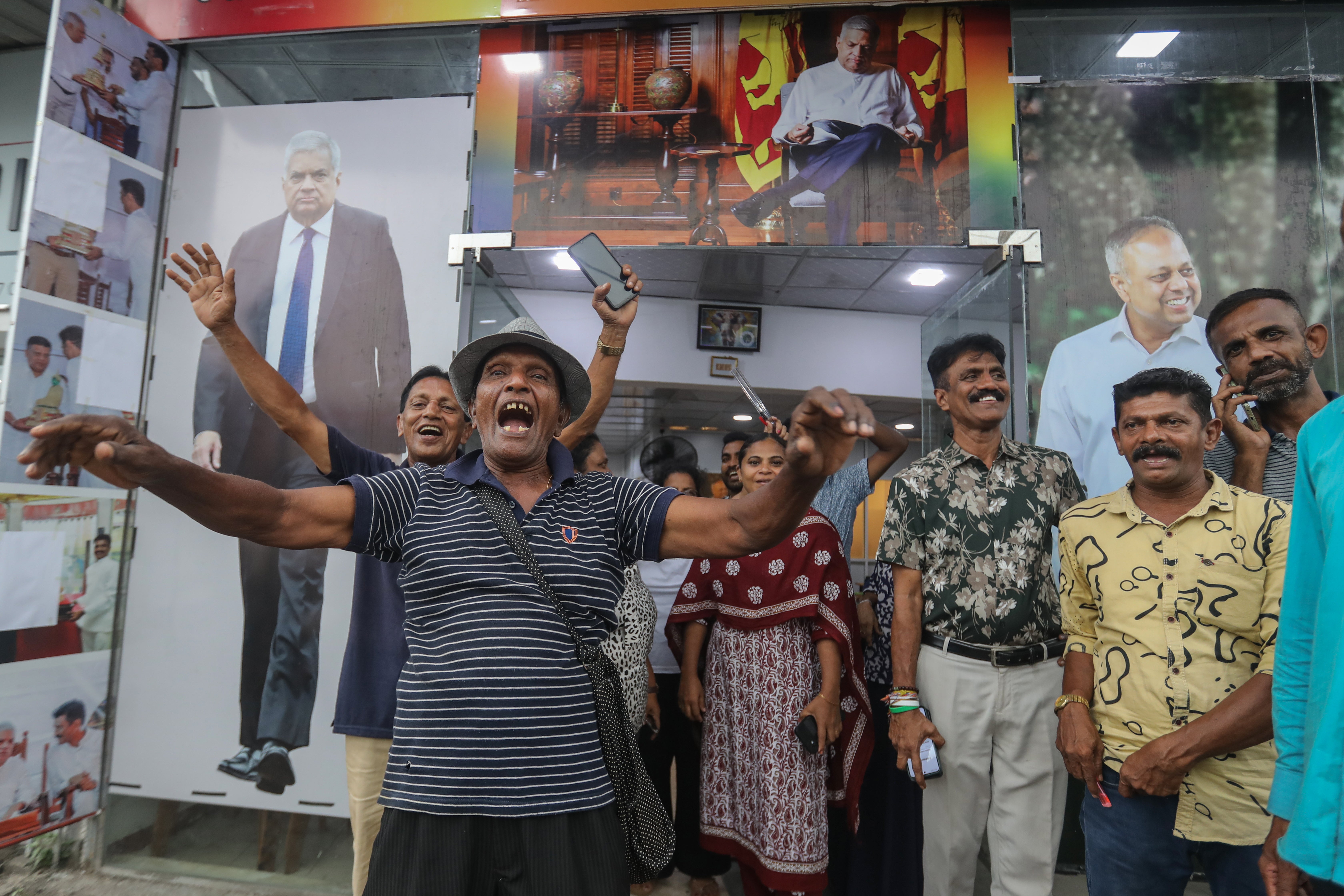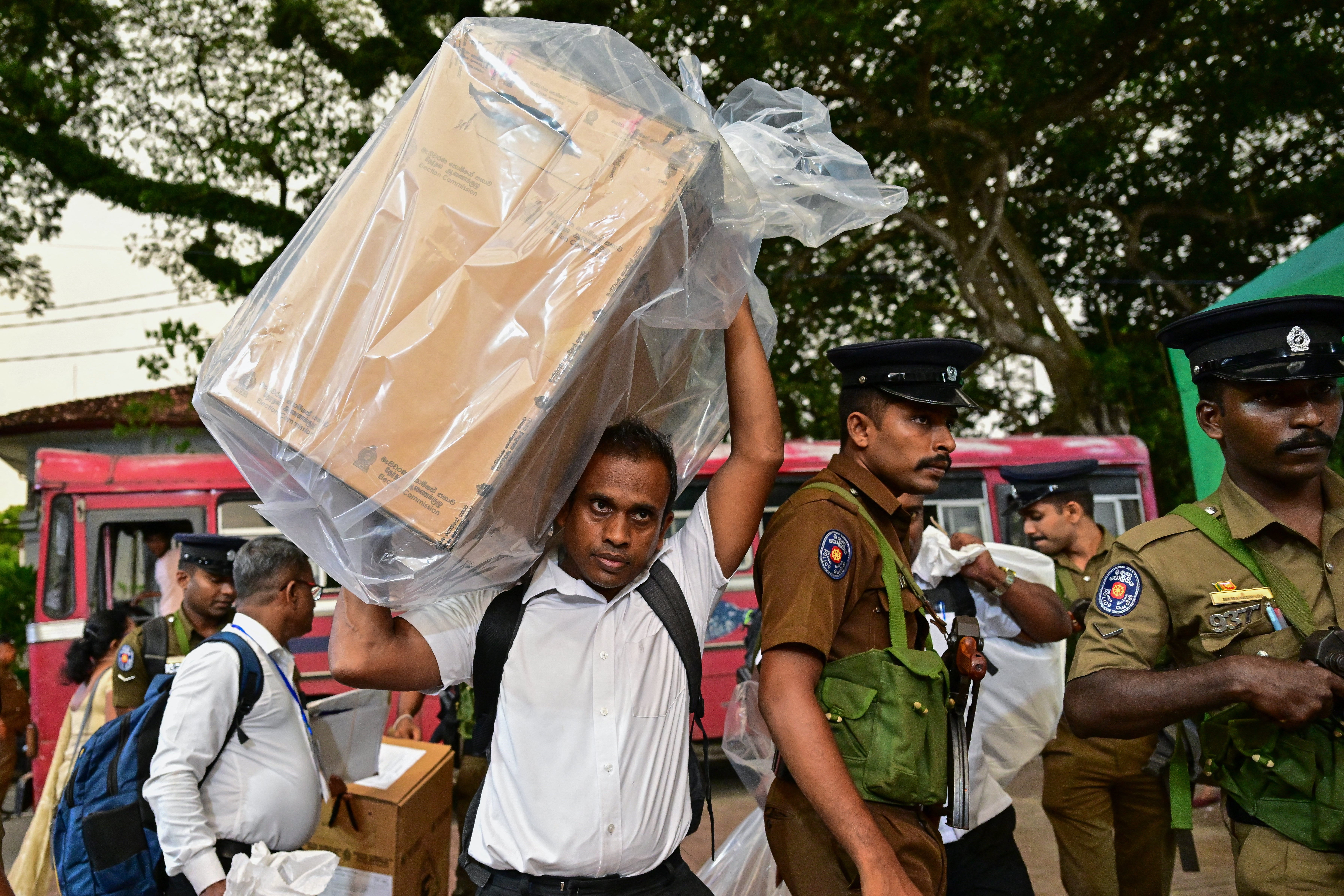Sri Lanka president’s party wins landslide victory in snap elections
Dissanayake seeks a strong mandate to implement policies aimed at alleviating poverty in crisis-hit Sri Lanka
Your support helps us to tell the story
From reproductive rights to climate change to Big Tech, The Independent is on the ground when the story is developing. Whether it's investigating the financials of Elon Musk's pro-Trump PAC or producing our latest documentary, 'The A Word', which shines a light on the American women fighting for reproductive rights, we know how important it is to parse out the facts from the messaging.
At such a critical moment in US history, we need reporters on the ground. Your donation allows us to keep sending journalists to speak to both sides of the story.
The Independent is trusted by Americans across the entire political spectrum. And unlike many other quality news outlets, we choose not to lock Americans out of our reporting and analysis with paywalls. We believe quality journalism should be available to everyone, paid for by those who can afford it.
Your support makes all the difference.Anura Kumara Dissanayake’s coalition has secured a decisive victory in Sri Lanka’s snap general election, giving its new leftist president greater legislative powers to pursue policies to revive a country in the grip of a financial crisis.
Mr Dissanayake, an outsider in a country dominated by family politics for decades, comfortably won the island’s presidential election in September.
But his Marxist-leaning coalition, the National People’s Power (NPP), had just three of 225 seats before Thursday’s election, prompting him to dissolve parliament and seek a fresh mandate. This will help consolidate support for his economic relief initiatives aimed at alleviating the struggles of Sri Lanka’s poorest citizens amid an ongoing financial crisis.
The NPP won 107 seats, receiving almost 62 per cent or 6.8 million votes in Thursday’s election, putting them past the majority mark in the parliament, latest results on the Election Commission of Sri Lanka‘s website showed. A two-third majority appeared within reach of the coalition.
“We see this as a critical turning point for Sri Lanka,” Mr Dissanayake declared after casting his vote on Thursday.
"There is a change in Sri Lanka’s political culture that started in September, which must continue,” he said.

The Samagi Jana Balawegaya (SJB) party, led by opposition figure Sajith Premadasa, was the NPP’s main rival in the election but fell far short of challenging Mr Dissanayake’s sweeping success. The SJB captured just 28 seats with roughly 18 per cent of the votes polled.
Voters directly elect 196 members to parliament from 22 constituencies under a proportional representation system. The remaining 29 seats will be allocated according to the island-wide proportional vote obtained by each party.
Celebrations were largely muted, with the exception of a few NPP loyalists who lit fireworks in the outskirts of the capital, Colombo.

Approximately 17 million Sri Lankans were eligible to vote, with the election drawing a record number of political entities, as 690 parties and independent groups competed across the nation’s 22 electoral districts.
The vote grants lawmakers a five-year term in office, as the president seeks to address the economic and social fallout of the country’s ongoing debt and currency crises.
Traditionally, Sri Lankan voters support the president’s party in parliamentary elections held shortly after a presidential win, and this election appears no different.
Although the president holds considerable executive power, Mr Dissanayake still requires a parliamentary majority to fully appoint his cabinet and advance key economic policies. Among his ambitious goals is a plan to abolish Sri Lanka’s executive presidency, but for this, he needs a two-thirds majority in parliament.
Sri Lanka, a nation of 22 million, has been reeling from an economic crisis that erupted in 2022, which saw the country default on its debt due to a severe foreign currency shortage. This crisis drove the economy into a 7.3 per cent contraction in 2022, followed by a further 2.3 per cent drop last year.
However, the country has shown signs of recovery after securing a $2.9bn bailout from the International Monetary Fund (IMF), though many citizens still struggle with the soaring cost of living.
In his economic strategy, Mr Dissanayake aims to soften some of the IMF’s stringent targets, hoping to cut back on income tax obligations and redirect funds towards welfare for those hit hardest by the downturn. Yet this approach has raised concerns among investors, who fear that attempts to alter the bailout terms could disrupt future IMF disbursements and jeopardise Sri Lanka’s target of reaching a primary surplus of 2.3 per cent of GDP by 2025.
The president’s ability to secure broad support in parliament will be critical as he moves forward with policies aimed at stabilising the economy while navigating international commitments and addressing the urgent needs of Sri Lanka’s most vulnerable populations.
Additional reporting by agencies

Join our commenting forum
Join thought-provoking conversations, follow other Independent readers and see their replies
Comments